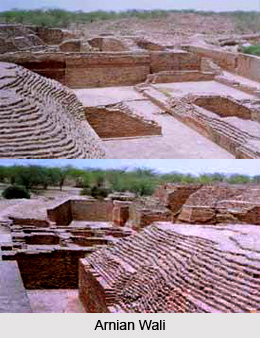 Leisure tourism in Sirsa District includes visits to several historical sites that are worth exploring. The archaeological Survey of India, during the archaeological exploration of the Ghaggar valley in Sirsa District in 1967 and 1968, nearly 54 sites, yielding the painted grey, black and Red, Black Slipped, Grey and Red wares and those belonging to Rang Mahal Culture were discovered. No Harappan settlement, however, could be located. Sites yielding Rang Mahal Pottery were found to be situated in close proximity of Ghaggar. Among the painted grey ware settlement, a mound found at Rania deserves special mention. The painted grey ware types found here mainly comprised dishes and bowls. Pottery of the later periods was also collected from this site. Besides, two mounds at Sikanderpur from where stone slabs having marks of iron dowels were found can be ascribed to Rang Mahal Culture. A few more archaeological sites were identified in the district.
Leisure tourism in Sirsa District includes visits to several historical sites that are worth exploring. The archaeological Survey of India, during the archaeological exploration of the Ghaggar valley in Sirsa District in 1967 and 1968, nearly 54 sites, yielding the painted grey, black and Red, Black Slipped, Grey and Red wares and those belonging to Rang Mahal Culture were discovered. No Harappan settlement, however, could be located. Sites yielding Rang Mahal Pottery were found to be situated in close proximity of Ghaggar. Among the painted grey ware settlement, a mound found at Rania deserves special mention. The painted grey ware types found here mainly comprised dishes and bowls. Pottery of the later periods was also collected from this site. Besides, two mounds at Sikanderpur from where stone slabs having marks of iron dowels were found can be ascribed to Rang Mahal Culture. A few more archaeological sites were identified in the district.
The prominent places of archaeological interest in Sirsa District are mentioned below -
Arnian Wali: It is situated at around 8 kms south of Sirsa. A mound measuring nearly 4 acres and approximately 10 feet high lies 400 meters north of the village. It has yielded fragments of pottery of early history and medieval times.
Sikanderpur: Located about 12 kms east of Sirsa, the village is approached by a link Road from Sirsa - Fatehabad Road. The site, which has two mounds, 1 km apart, is located about 1.6 kms north-east of the villages and is nearly 30 feet high. Heavy stone slabs and a sculpture, specimens of a temple of early medieval times were found from this site. A sculpture of an `Ekmukha Linga` of Lord Shiva belonging to early medieval times has also been discovered. The specimen represents Shiva both in his human as well as phallic form. A Sculpture of Lord Indra recovered from the site is a fine specimen representing two armed Indra. Another sculpture of Indra belonging to the early medieval times has also been found. The site has also yielded Rang Mahal and medieval wares.
Suchan: Located about 16 kms east of Sirsa, the site has yielded fragments of Pottery of Rang Mahal and early medieval wares.
Mangiana: It is located about 13 kms east of Mandi Dabwali. The mount, located about a km west of the village, is 15 feet high. It has yielded fragments of early historic and medieval wares.
Saint Baba Bihari Samadhi: The Samidhi is situated in the western part of Sirsa city in a beautiful Vatika.
Tomb of Khawaja Pir: The Tomb is said to have been built in the memory of Khawaja Abdul Shankar. He was one of those who accompanied Muhammad Ghori to India and resided here. A mosque was built adjoining the Tomb later during the 16th century. However, no remains of Tomb or Mosque are there. Guru Nanak Dev is said to have stayed here for 40 days along with his disciples.
These tourist places of Sirsa District draw the attention of the visitors from far and wide.






